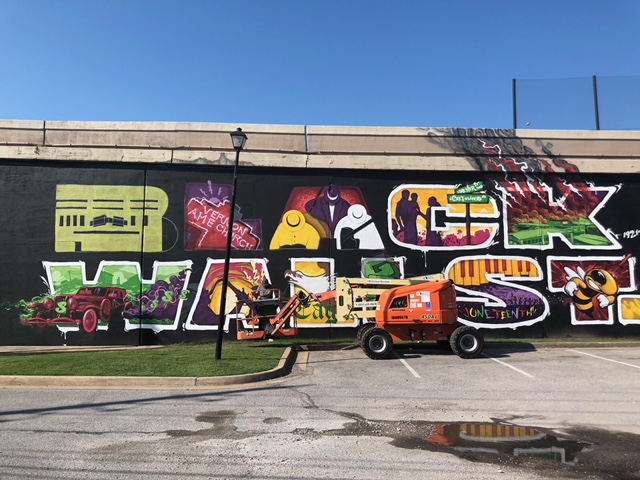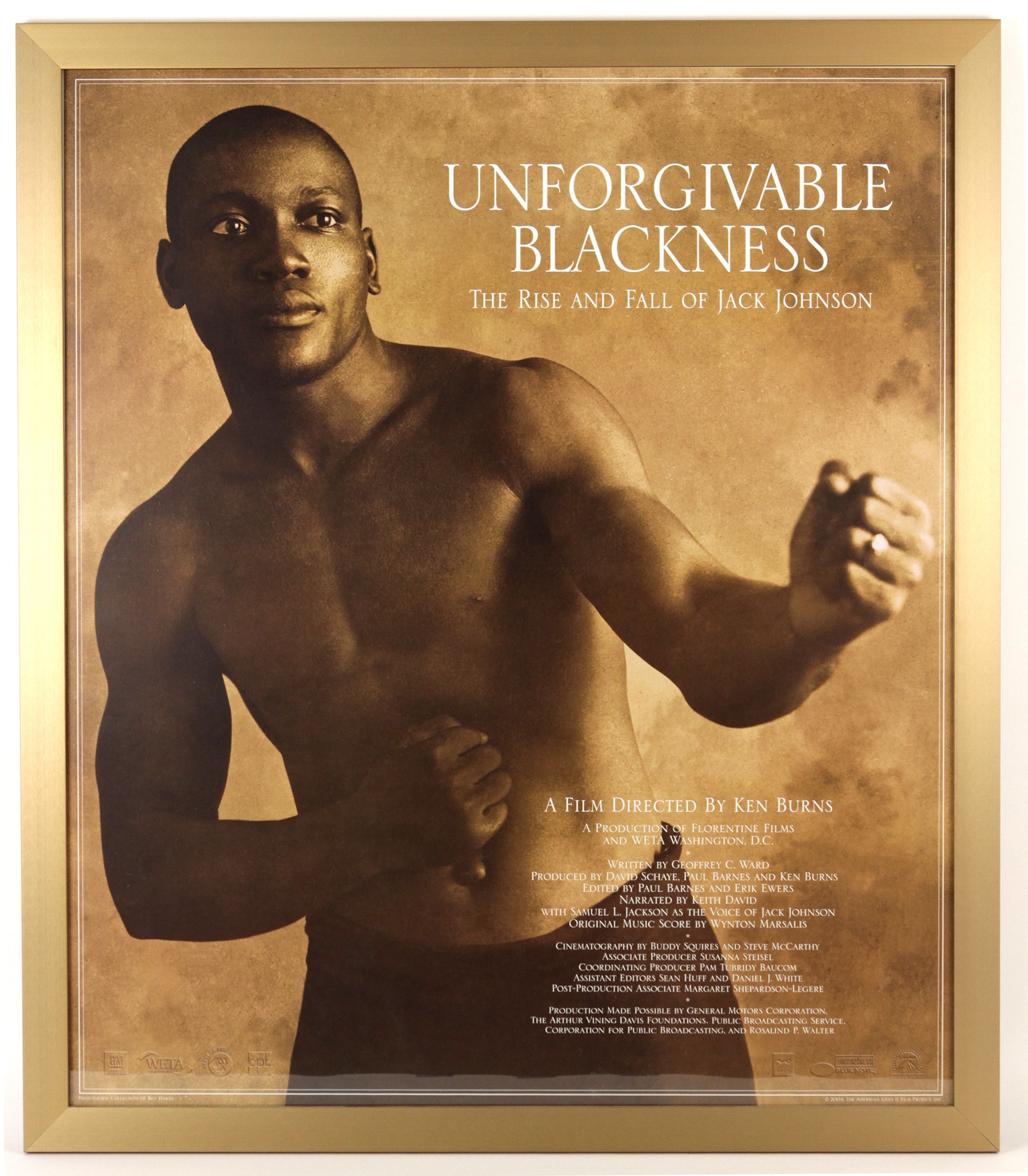
By Joseph Goodwin, more updates to come
Eagle Staff Writer

Black Wall St. artist Donald “Scribe” Ross (inset) has spent more than 100 hours, working on the 10ft by 30ft mural for the past 10 days. (Photo by Joseph Goodwin)
Greenwood Cultural Center Director of Development Bill White had a vision to restore the historical narrative to the famed district by refurbishing the past with a testament to what once was, what is, and what shall be. This vision was to update the fading murals on the inner dispersal loop, which cuts through the heart of Greenwood, with a millennial inspired retrospect. Famed Kansas City artist Donald “Scribe” Ross was commissioned to do just that, bringing his talents to Tulsa for a second time.
This Friday, June 1 at 2:30 p.m. the unveiling of this nearly yearlong project will be held. The grandson of a former University of Oklahoma and pro-football player, Scribe has created a large-scale painting, consisting of 11 individual murals to represent a district that has seen more than its’ fair share of triumph and tragedy. The message Scribe intends for this project is “to keep the conversation going because many of the new residents have no idea of the history, demonstrating the suppression of history” has achieved its’ desired end. Scribe, whose Oklahoma roots trace back to the Oklahoma land run, and the Centennial Race Riot Commission hope to reverse this trend, which he notes would be possible without the tireless effort of Chris “Sker” Rogers, who provide much of the historical information contained within the 10 foot by 30 foot panel, commemorating Black Wall Street.
Since Scribe began this 10-day long task, he has experienced only positive feedback. Kelly Titicher, a 2001 graduate of Booker T. Washington, stopped by on her way to her morning commute to admire the progress. “I think it is really awesome in the artistic and design aspect but more than anything it is creating a conversation Tulsans need to have about everything, race, wealth, inequality, geographic disparities, and this mural is capturing all of these issues.” Titicher’s comment is exactly what White desires the mural to do. “This project we were thinking of welcome to Greenwood, but that idea doesn’t give enough punch, and to wake up the idea to Tulsans, we thought it vital to have a Black Wall Street sign to say you are here, and it needs to tell a story of Black Wall Street, Greenwood, and the resiliency, the whole financial engine that was once here with each letter representing its’ own mural, telling its own story.”










